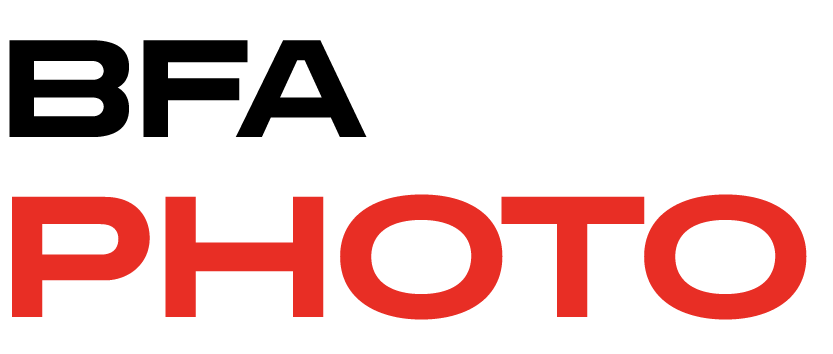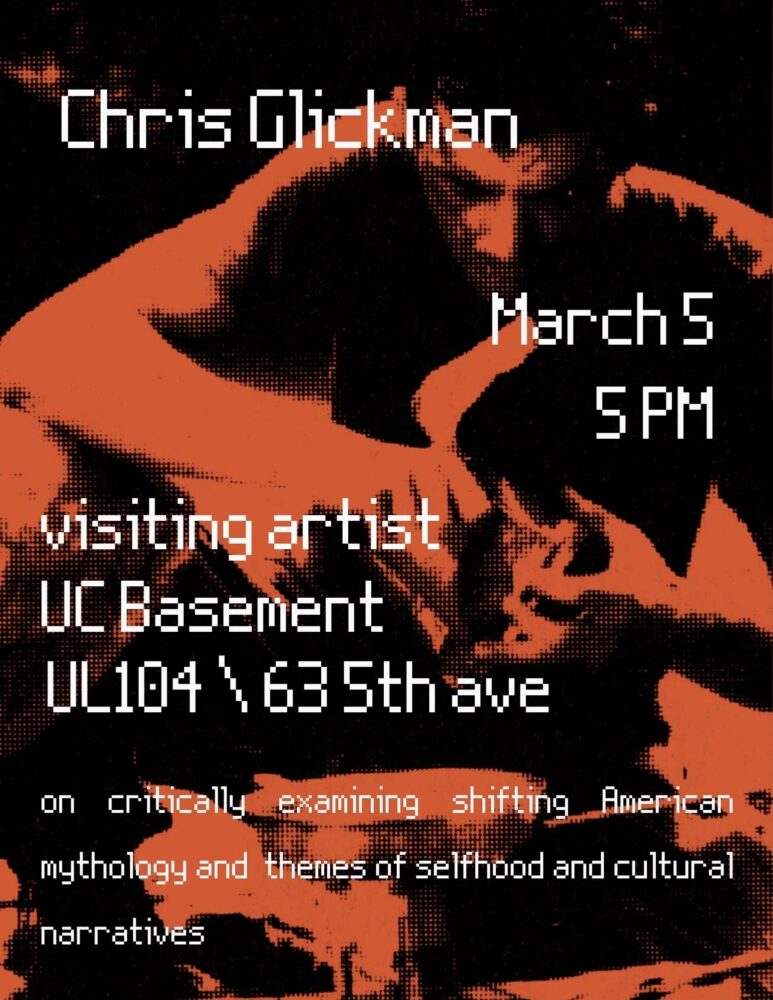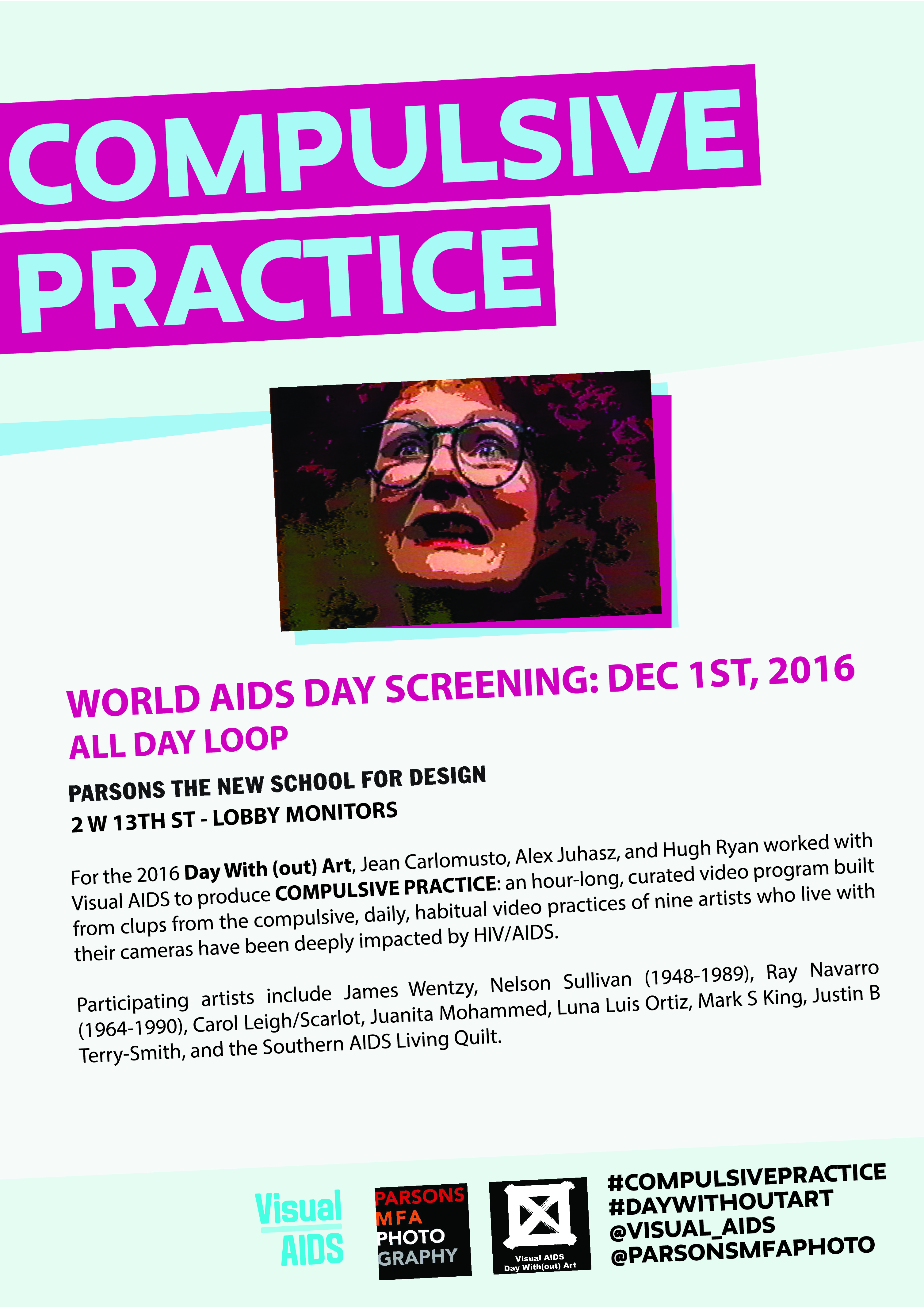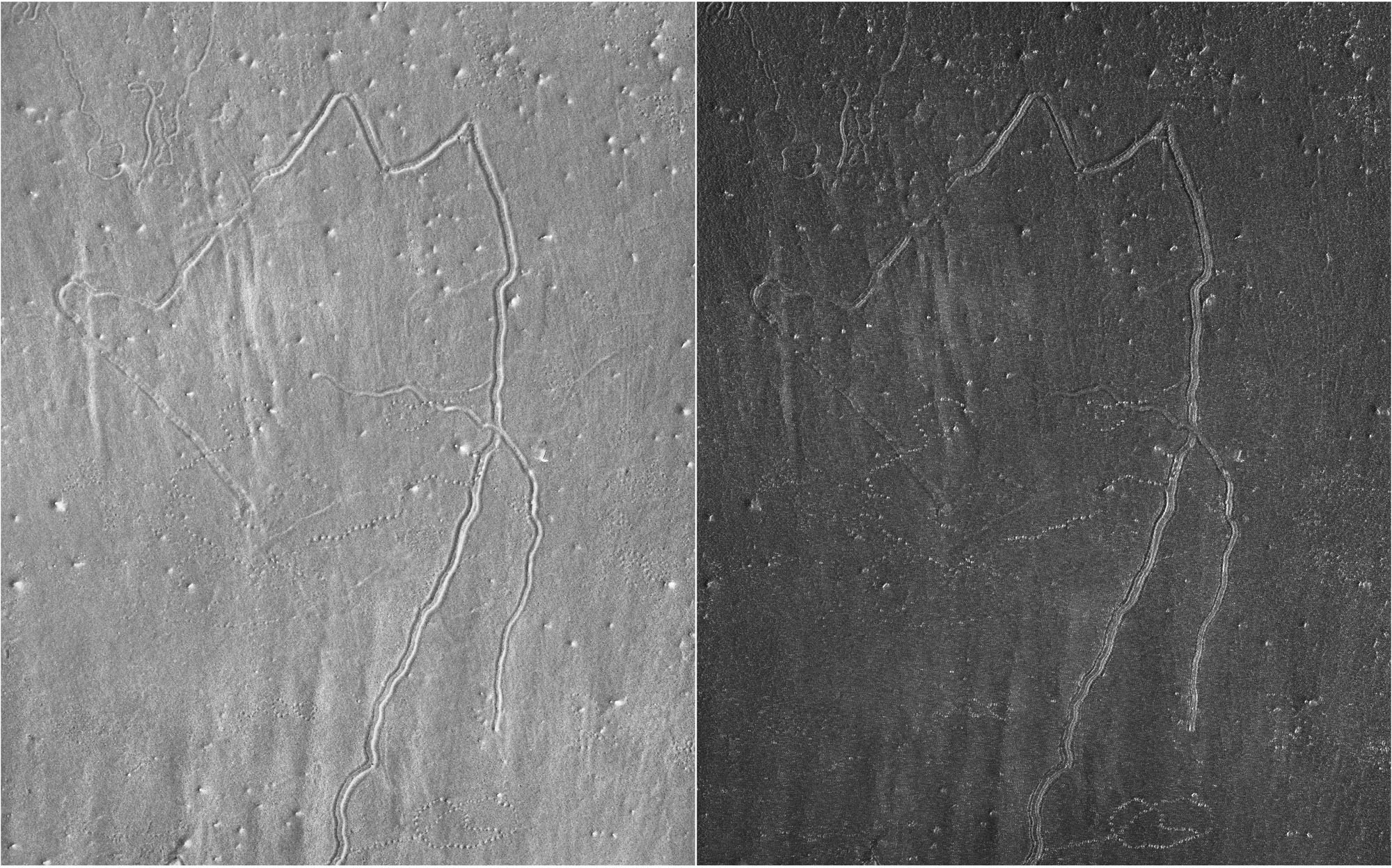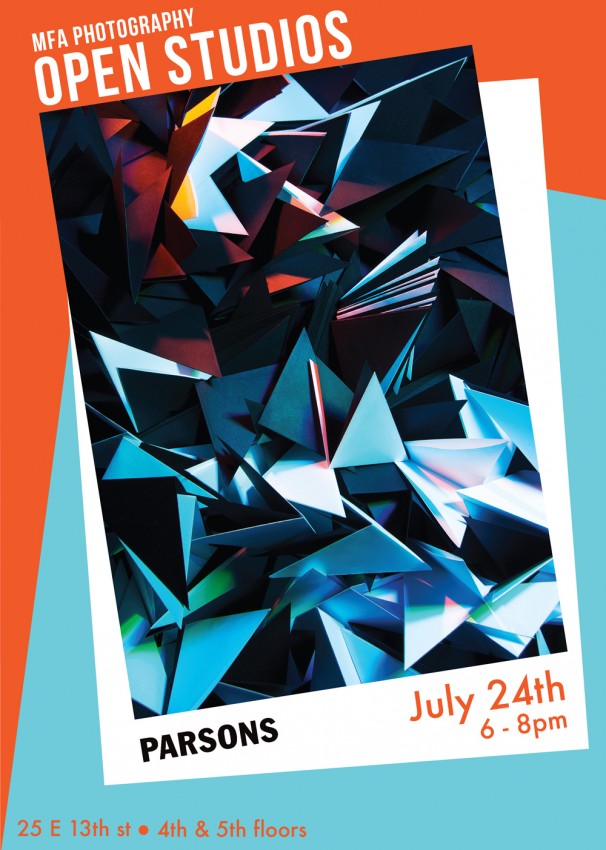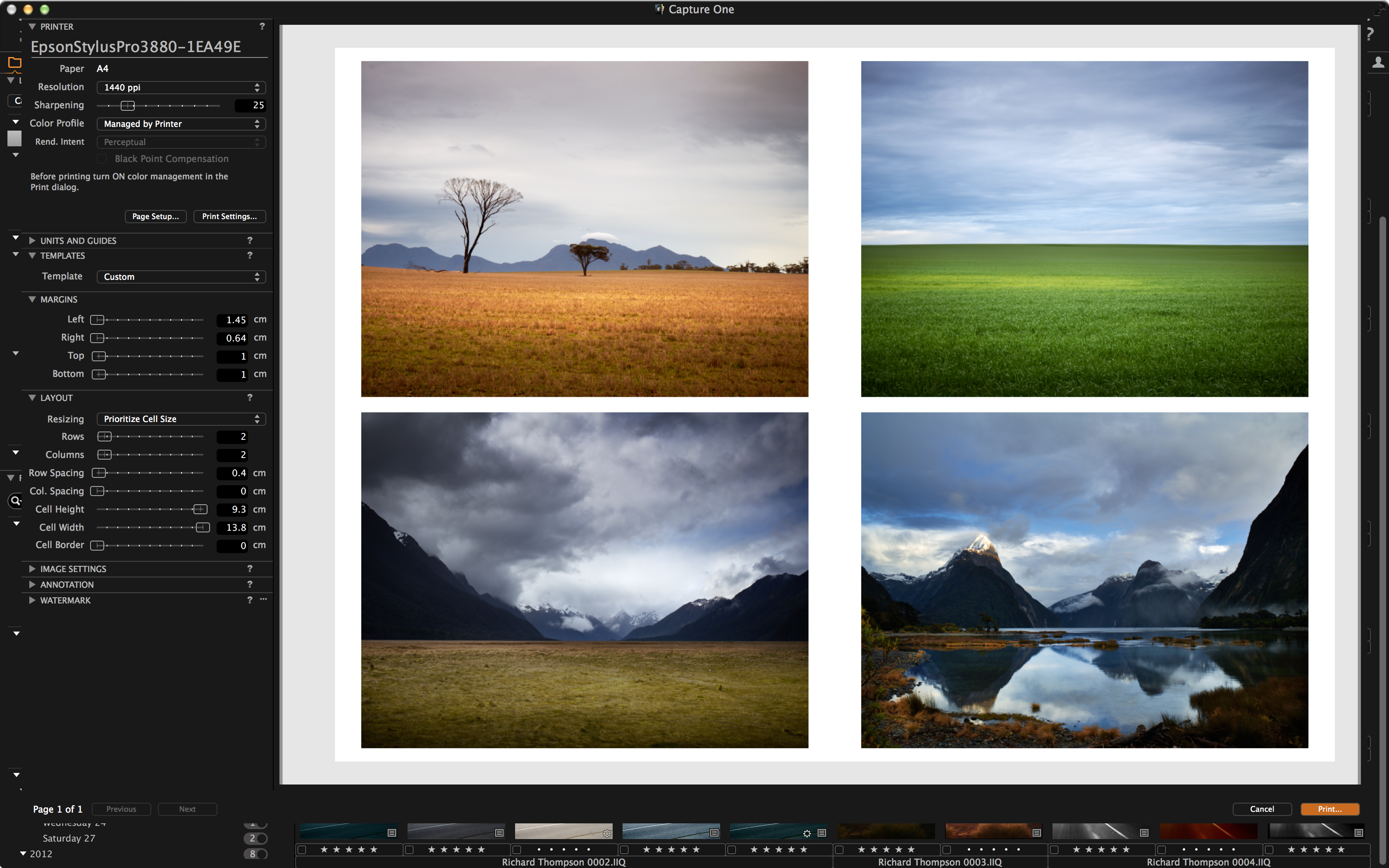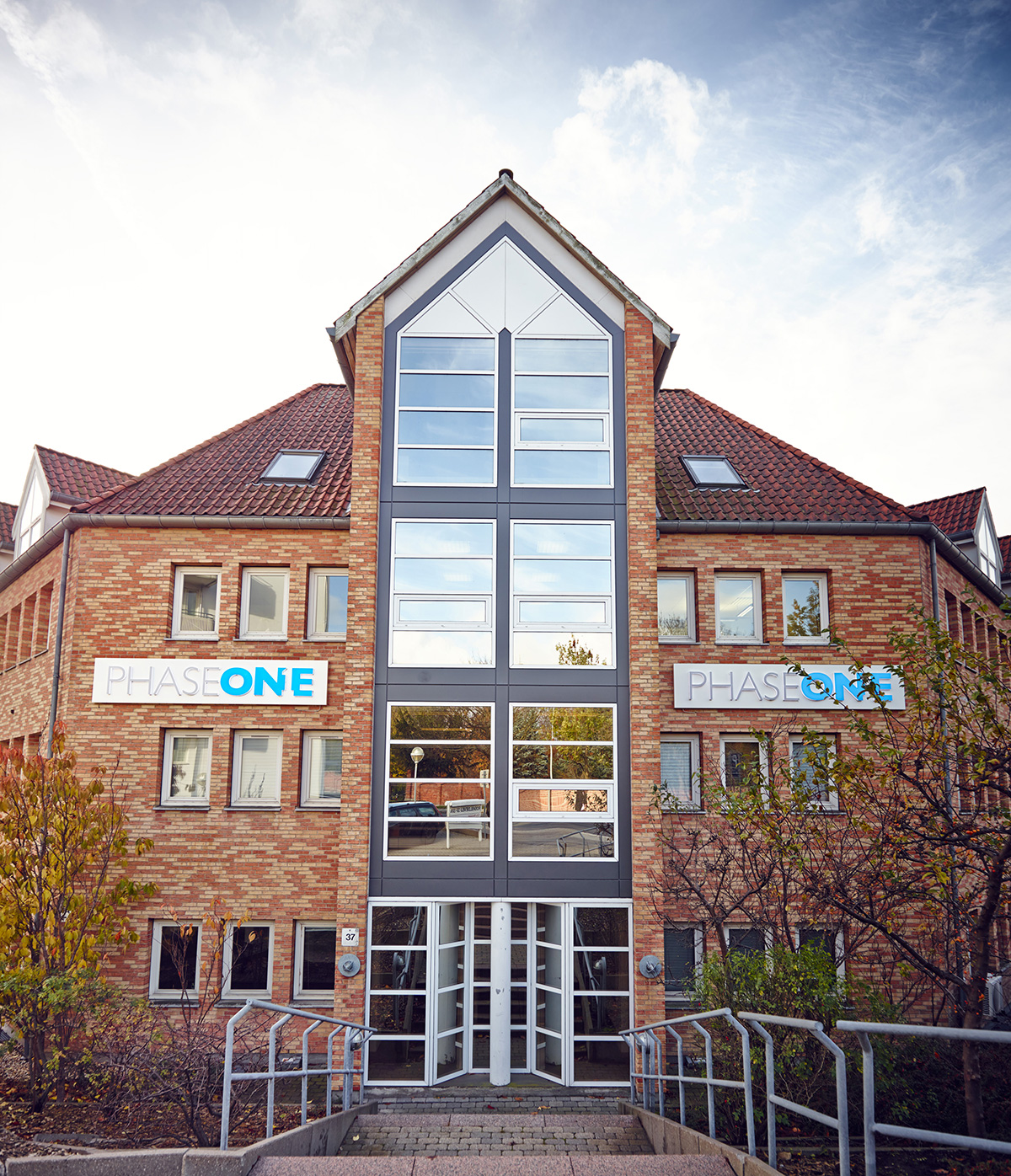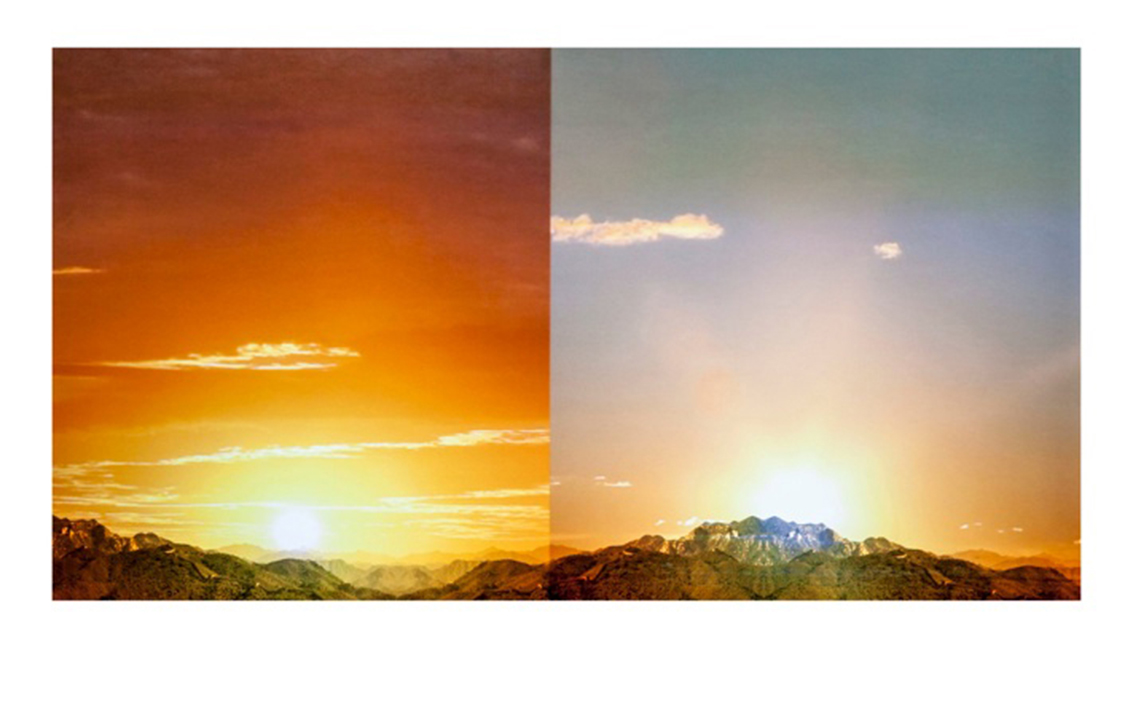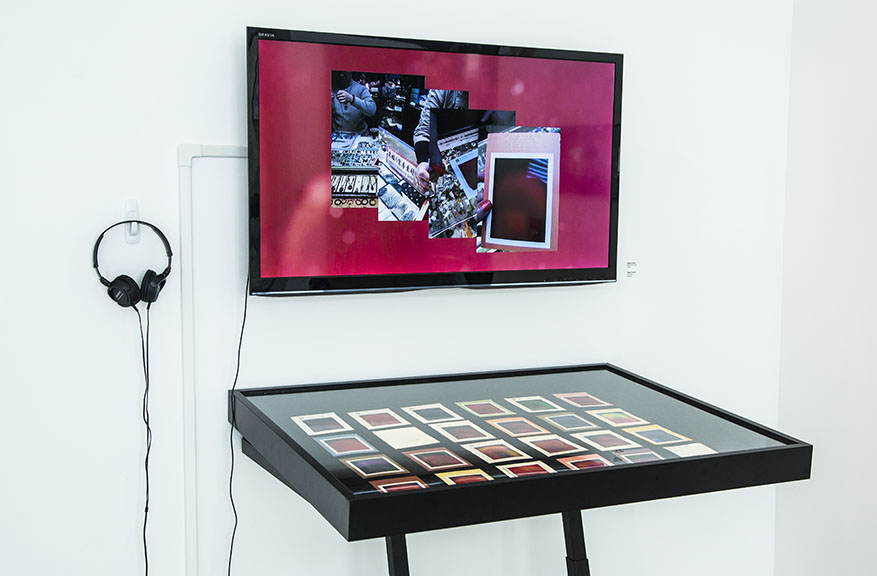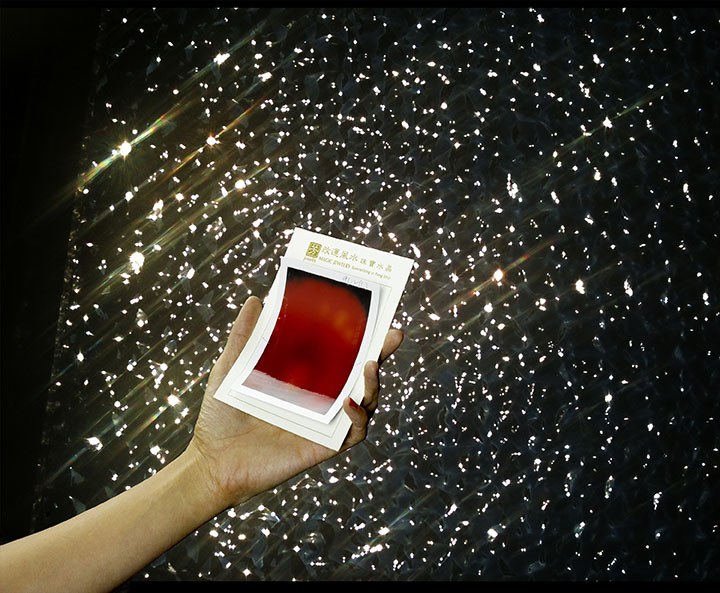News
Aperture Conversations | The Power of Images: A Conversation About Race Stories | Feb. 12, 7pm | Tishman Auditorium

Please join Aperture, Parsons Photography & the Vera List Center for Art and Politics for a panel discussion about Race Stories: Essays on the Power of Images — the first title in Aperture’s Vision & Justice Book Series –by Maurice Berger and edited by Marvin Heiferman (Aperture; New York Times, 2024). Joining Marvin Heiferman are Drs. Sarah E. Lewis and Deborah Willis who, along with Leigh Raiford, are the creators of the Vision & Justice Book Series and coeditors of this title.
Race Stories is the first title in Aperture’s Vision & Justice Book Series—featuring a collection of award-winning short essays by Maurice Berger that explore the intersections of photography, race, and visual culture. The book examines the transformational role photography plays in shaping ideas and attitudes about race and how photographic images have been instrumental in both perpetuating and combating racial stereotypes. Written between 2012 and 2019 and first presented as a monthly feature on the New York Times Lens blog, Berger’s incisive essays help readers see a bigger picture about race through storytelling.
Marvin Heiferman is a curator, writer, editor, and producer. He organizes exhibitions and online projects about photography and visual culture for venues that have included the Museum of Modern Art, Whitney Museum of American Art, the New Museum, International Center of Photography, in New York; Smithsonian Institution, Washington, DC; and LIGHT Gallery, New York. His publications include Photography Changes Everything (Aperture; Smithsonian, 2012) and Seeing Science (Aperture; University of Maryland, Baltimore County, 2019). Heiferman has contributed essays and articles to numerous artist monographs, museum catalogs, trade publications, magazines, and media outlets, including the New York Times, CNN, Artforum, Gagosian Quarterly, Design Observer, Aperture, Art in America, and BOMB. He has edited Race Stories: Essays on the Power of Images, by Maurice Berger (Aperture; New York Times, 2024), and Nan Goldin: The Ballad of Sexual Dependency, (Aperture, 1986).
Dr. Sarah E. Lewis is an art and cultural historian and founder of Vision & Justice. She is the John L. Loeb Associate Professor of the Humanities and associate professor of African and African American studies at Harvard University, where she serves on the Standing Committee on American Studies and Standing Committee on Women, Gender, and Sexuality. She is the organizer of the landmark Vision & Justice Convening, and coeditor of the Vision & Justice Book Series, launched in partnership with Aperture, beginning with Race Stories (Aperture; New York Times, 2024). The Vision & Justice issue of Aperture magazine, guest edited by Lewis, received the 2017 Infinity Award for Critical Writing and Research from the International Center of Photography.
Dr. Deborah Willis is a curator, photographer, and a leading scholar of photography and Black studies. She is university professor and chair of the Department of Photography and Imaging at the Tisch School of the Arts at New York University, where she is also the director of the NYU Institute for African American Affairs and the Center for Black Visual Culture. She is a MacArthur and Guggenheim Fellow. Willis received the NAACP Image Award in 2014 for her coauthored book Envisioning Emancipation: Black Americans and the End of Slavery (with Barbara Krauthamer) and in 2015 for the documentary Through a Lens Darkly, inspired by her book Reflections in Black: A History of Black Photographers 1840 to the Present. In February 2024, President Biden announced Willis as a nominee to be a member of the National Council on the Humanities.
Maurice Berger (born and died in New York, 1956–2020) was a cultural historian, curator, and writer, who spent much of his career studying and teaching racial literacy through innovative visual literacy projects. In influential essays, books, and provocative museum exhibitions, Berger gathered and presented compelling photographic images to engage and challenge readers and viewers into reconsidering both cultural and personal assumptions and prejudices. His books include White Lies: Race and the Myths of Whiteness (2000) and For All the World to See: Visual Culture and the Struggle for Civil Rights (2010), which was also one of the premier projects mounted by the National Museum of African American History and Culture, Washington, DC. He received honors and grants from the National Endowment for the Humanities, National Endowment for the Arts, Association of Art Museum Curators, and Andy Warhol Foundation for the Visual Arts, and was nominated for an Emmy Award. Berger was the first Vera List Center Fellow, appointed in 1993.
Presented by BFA Photography at the School of Art, Media & Technology, Aperture Foundation and the Vera List Center for Art and Politics.
BFA Thesis | March 25 – April 7 | 2024

We are proud to announce the Thesis Exhibition for the BFA Photography class of 2024!
Open from March 25th – April 7th in the Sheila C. Johnson Design Center (66 5th Ave, New York)
There will be a closing reception on Friday, April 5th from 4-7pm.
Please also visit the Thesis website.
Magnum Foundation Presents “PHOTOGRAPHY EXPANDED: COUNTER-HISTORIES”
Magnum Foundation Presents “PHOTOGRAPHY EXPANDED: COUNTER-HISTORIES”
This full-day symposium will feature projects that question official histories, disrupt the power structures embedded in archives, and explore the radical possibility of alternative narratives. Free and open to the public!
Photography Expanded is an annual event that brings together photographers, writers, technologists, students, and other creative thinkers to experiment with new approaches to visual storytelling.
This event is free and open to the public, and seating is on a first come, first served basis. Speakers and full schedule will be released in the coming weeks.
The program is organized by the Magnum Foundation in collaboration with Parsons School of Design at The New School, and featured as part of The New School’s Nth Degree Series: Creative Minds Creating Change.
May 1, 2018
9:00 AM–4:00 PM
Reception to follow
The New School
63 5th Avenue, NYC
Special Events for Alumni/Students of Color: 10/21 Community Brunch, 10/26 Portfolio Review, 10/27 Exhibition Closing Reception

(under)REPRESENT(ed) Community BrunchSaturday, October 21 from 11am-2pm6 East 16th Street, Wolff Conference Room 1103Alumni of color and Students of color are invited to break bread, reflect and strategize around experiences of race and identity at Parsons and within creative industries.
Please RSVP: tinyurl.com/underrepresentedbrunch
Fb event:……………………………..(under)REPRESENT(ed) Portfolio ReviewsThursday, October 26 from 6-8pmStarr Foundation Hall- 63 Fifth Ave (UC), Lower levelStudents of color are invited to receive critical feedback on work that addresses race and identity from alumni of color.Please RSVP: tinyurl.com/underrepresentedreview
……………………………..(under)REPRESENT(ed) ClosingFriday, October 27 at 6 PM – 8 PM66 Fifth Avenue, Arnold and Sheila Aronson GalleriesExhibiting alumni reflect on their work. Open to the public.For more information, visit: underrepresented.parsons.edu or email us at underrepresented@newschool.edu.
(under)REPRESENT(ed) to Open at Sheila C. Design Center
October 17, 6-8 PM
Sheila C. Design Center, Arnold and Sheila Aronson Galleries
66 5th Ave, Ground Floor
New York, NY 10003
Closing reception with artist talk: October 27th, 6-8pm
(under)REPRESENT(ed) is an exhibition that features Parsons School of Design alumni of color whose creative practices explore the lived experience of race and aim to dismantle systems of racism. Initiated and organized by a collective of alumni of color, this exhibition features a range of disciplines which simultaneously address and resist the systemic exclusion that prevails in educational and professional institutions and practices.
A video from a digital and physical archive that affirms the future of people of African descent; a design research project lessens the impact of hurricane season on one alum’s hometown in the Dominican Republic; a children’s book fable reveals an allegory of the dangerous journey migrants often face to enter the United States; an online syllabus resource explores the intersections of fashion and race; photographs reflect on the historic status symbol and power of hair in Korean culture, which resonates in communities across the globe; and a multimedia project promotes citizen journalism and challenges the normalization of police violence.
“We are moved by an urgency to foreground the power generated by creative practices,” said the curators of the exhibition. “Our own experience as students, practicing artists, designers, educators and cultural organizers tells us that this work isn’t always given its due criticism or celebration in the classroom and other institutional spaces.”
People of color have been pioneers in fields of art and design, although they continue to be significantly underrepresented in positions of power and compensation. Despite the rich foundational contributions by Black, Latinx, Asian, and Indigenous communities to these industries, they are often rendered invisible. The curators of this exhibition stake a claim for the centrality of those most deeply impacted by these oppressive frameworks in an era which challenges our existing tools of resistance.
The Parsons alumni featured in the exhibition are (AMT Alums in bold):
Salome Asega, MFA Design and Technology ’14
Rikki Byrd, MA Fashion Studies ’16
Raquel de Anda, MS Design and Urban Ecologies ’15
Nelson de Jesus Ubri, BFA Architectural Design ’15
Patricia Encarnación, BFA Communication Design ’14
Noelle Flores Théard, MFA Photography ’14
Scherezade Garcia, BFA Illustration ’90
Alston Green, CGRD Illustration ’72
Kim Jenkins, MA Fashion Studies ’13
Leslie Jimenez, BFA Fine Arts ’12
Sara Jimenez, MFA Fine Arts ’13
Yuni Kim Lang, BFA Communication Design ’09
Jeana Lindo, BFA Photography ’17
Joy McKinney, MFA Photography ’14
Joiri Minaya, BFA Fine Arts ’13
Ron Morrison, MS Design and Urban Ecologies ’15
Inyegumena Nosegbe, BFA Communication Design ’16
Ayodamola Okunseinde, MFA Design and Technology ’15
Isaac Paris, BFA Communication Design ’78
Kaitlynn Redell, MFA Fine Arts ’13
Jeff Staple, Illustration
Ken Tanabe, MFA Design and Technology ’04
James Terrell, MFA Painting ’02
Duncan Tonatiuh, BFA Integrated Design Curriculum ’08, BA Liberal Arts ’08
Robert Liu-Trujillo, BFA Illustration ’10
Christopher Udemezue, BFA Integrated Design Curriculum ’08
…
Organized by a collective of Parsons Alumni of Color
Havanna Fisher, BFA Fashion Design ’14, BA The Arts ’14
Scherezade García, BFA Illustration ’90
Joelle Riffle, BFA Communication Design ’13
Yelaine Rodríguez, BFA Fashion Design ’13
Sable Elyse Smith, MFA Design and Technology ’13
Nadia Williams, BFA Fashion Design ’01
(under)REPRESENT(ed) equity + social justice advisor: Gail Drakes
(under)REPRESENT(ed) research assistant: Claudine Brantley, BFA Candidate of Photography ’18
(under)REPRESENT(ed) research assistant: Barbara Byrd, BFA Fine Arts ’17
Contact us at underrepresented@newschool.edu
The exhibition will run from October 14, when an opening reception for Parsons alumni will be held, until October 29.
More info here.
Kari Bjorn Announced as Finalist for Hasselblad Masters 2018
BFA Photography Senior Kari Bjorn, has recently been announced as a finalist in the ‘Street/Urban’ category for Hasselblad Masters 2018. The images that Bjorn submitted are from his series entitled “Synergy”. Below is the project statement along with images from the Synergy Series. You can also vote for Kari here!
Synergy is a series of photographs that extracts fragments from everyday banal life and utilizes photographs power to create an alternative meaning. By framing fixed information on the street with unaware pedestrians it creates a somewhat humorous and open ended one-liners that only serves the purpose of bringing out the heh’s and huh’s in the viewer.
The photographs violently exploit and manipulate its subjects and place them in stories they quite possibly never wanted to be a part of. However, the viewer does not only react to the subject but the core of each photograph is found in the split-second juxtaposition of the two, “the fixed and the living.”



Photo Requests from Solitary Exhibition @ Photoville
Parsons Photo Faculty Jeanine Oleson’s ongoing art and activism project “Photo Requests from Solitary” will be exhibiting work at Photoville this year. The project is a continuation of work supported by Parsons School of Design.
“Photo Requests from Solitary” invites men and women held in long-term solitary confinement to request a photograph of anything at all, real or imagined, and finds artists to make the images. The resulting photographs provide an archive of the hopes, memories, and interests of people who endure extreme isolation and sensory deprivation.
Instead of describing or replicating the bleak conditions in which these individuals live, “Photo Requests from Solitary” presents what they envision—the vivid and varied thoughts/objects/images that all minds produce, independently of senses and circumstances. Rather than implying that images are ‘missing’ from their lives and need to be provided from the outside, the project affirms that images are already there, part of their total world. People in solitary give us their images, and we give them back as photographs, in an artistic partnership that acknowledges our shared creativity and humanity.
The photographs on display at Photoville were taken for people in solitary confinement in New York who spend 22 to 24 hours a day in small cells without meaningful human contact, in conditions that the UN has defined as torture. More than 4,500 individuals are currently held in some form of isolation in New York’s prisons and jails, and some will remain there for months, years, or decades.
For more information about this exhibition, visit http://photoville.com/photo-requests-solitary/
ARTIST BIO
“Photo Requests from Solitary” is an ongoing artistic collaboration between people held in solitary confinement and photographers on the outside. The project was started in Illinois in 2009 by the grassroots anti-solitary group, Tamms Year Ten. Photos requested by men held in permanent solitary confinement in Tamms supermax prison were sent to the men inside, and also used for advocacy in efforts to close Tamms, which was finally shuttered in 2013.
That same year, “Photo Requests from Solitary” expanded to California and New York, in collaboration with Solitary Watch — a watchdog group that investigates, documents, and disseminates information about solitary confinement in U.S. prisons and jails — and Parsons The New School for Design. To date, more than 100 men and women in solitary have shared their visions and received photographs.
Continuing its mission to partner with local advocacy campaigns, “Photo Requests from Solitary” is currently working with the New York Campaign for Alternatives to Isolated Confinement, a grassroots coalition dedicated to ending the torture of solitary in New York’s prisons and jails through public education, community organizing, and passage of the Humane Alternatives to Long-Term (HALT) Solitary Confinement Act in the state legislature.
“Photo Requests from Solitary” is curated by artists Laurie Jo Reynolds (Tamms Year Ten), Jeanine Oleson (Parsons The New School for Design) and journalist Jean Casella (Solitary Watch), and is created by dozens of men and women in solitary confinement and volunteer photographers on the outside.
“Fact & Fiction” 2017 Team America BFA Photo and Media Studies Alumni with Thomas Werner
Photography Faculty Thomas Werner with BFA Photo Alumni Fan Chen, Therese Ohrvall, Jessica Richmond, and MFA Media Studies alumni Diana Khong.
On the celebratory boat ride after wrapping up 10 days of work with 7 museums in Saint Petersburg, Russia for “Fact & Fiction”, the 2017 Contemporary Art in Traditional Museums exhibition. The team from America is Fan Chen, Diana Khong, Tessi Öhrvall, Jess Richmond and Thomas Werner. Also pictured is our indispensable colleague and guide Anastasia Rozhkova. Travel and production were grant funded in their entirety by BFA Photography faculty member Thomas Werner. The exhibition will open in late September at the State Museum of the History of St Petersburg, Peter and Paul Fortress, Poterna Exhibition Hall.
Paid Fall Photo Editing Internship at TOPIC
TOPIC is looking for a talented, motivated photo intern to assist with editing, research, and other visual responsibilities. The internship will involve background image and story research; securing licensing for archival photography, video, and audio; artist portfolio discovery and research; organizing contracts and documents; brainstorming concepts and ideas for visual storytelling; and collaborating with designers, editors, and the social media team. This is an editorial position, not a photographer position. The intern will work on a variety of projects depending on the publishing schedule and the stories assigned.
Background & Qualifications:
- A strong visual aesthetic
- Recent graduate or current student preferred
- Passion for photography, art, and new media
- Thorough researching skills
- An interest in creative storytelling and a desire for discovery
- Good communication skills
- Ability to handle multiple projects within a tight deadline
- Fluent in Photoshop
- Knowledge of WordPress or other CMS
About TOPIC
Topic is the ambitious new storytelling brand and entertainment studio from First Look Media, dedicated to supporting creators at the forefront of culture. From Academy Award®-winning films (Spotlight) to television, audio and digital, we explore a wide range of subject matter, both fiction and nonfiction with an emphasis on stories of consequence that explore the issues of our time. Our approach – challenging, compelling and unconventional – reflects our commitment to discovering and amplifying independent new voices, and supporting established ones.
To apply visit here
Tehran Streetstyle: A Conversation with Hoda Katebi, April 10
Iranian Fashion Blogger and Activist Hoda Katebi to speak at Parsons about her recently-published photo book Tehran Streetstyle, the first-ever in-print collection of modern fashion photography from the streets of Tehran, Iran.
 Tehran Streetstyle provides a visual introduction to the Iranian underground fashion scene and the young people who play active roles in shaping and defining it. This book presents an alternative view of Iranians by challenging mainstream Western notions of Iran and fashion as well as domestic government regulations.
Tehran Streetstyle provides a visual introduction to the Iranian underground fashion scene and the young people who play active roles in shaping and defining it. This book presents an alternative view of Iranians by challenging mainstream Western notions of Iran and fashion as well as domestic government regulations.
Despite mandatory conservative governmental dress codes, the women and men photographed in Tehran Streetstyle creatively express their identities through fashion. They break countless laws in the process, risking arrest on a daily basis. Many of those photographed are fashion designers in Iran’s burgeoning underground slow fashion movement, actively creating provoking pieces while integrating traditional Iranian designs.
The photographs in this book reveal how Iranians are redefining the beauty standards of the global fashion industry, offering an inspirational alternative to the skin-bearing and tight-fitting clothes that dominate the Western fashion industry. Tehran Streetstyle reveals how a young generation of Iranians are taking control of their lives and challenging conservative norms at home and misrepresentation abroad, transforming their society in the process.
Author and photographer Hoda Katebi is a prominent activist fashion blogger and graduate of the University of Chicago whose research focuses on the underground fashion movement in Iran and the intersections of fashion, gender, and nation-hood. In 2013 she founded JooJoo Azad (www.joojooazad.com), an online platform dedicated to the integration of ethical fashion and activism through an anti-capitalist, intersectional-feminist, lens. Since then, Hoda’s work has been featured on various media outlets, including Teen Vogue, German RTL news, NPR, and the Malala Foundation blog. Her work focuses on the power of self-representation and narrative through fashion, writing, and photography; challenging misconceptions about Iran and Islam; encouraging an ethical and minimal lifestyle; and celebrating beauty that extends beyond that which is narrowly defined by mainstream media.
She will be speaking on Monday, April 10, at 6.45PM in Kellen Auditorium (66 Fifth Avenue, Ground Floor). This event is open to the public.
Alex Kwok (MFA Photo ’16) Looking for Artist Production Assistant
Bi-Annual BFA Photography Photo Feast Pin-Up
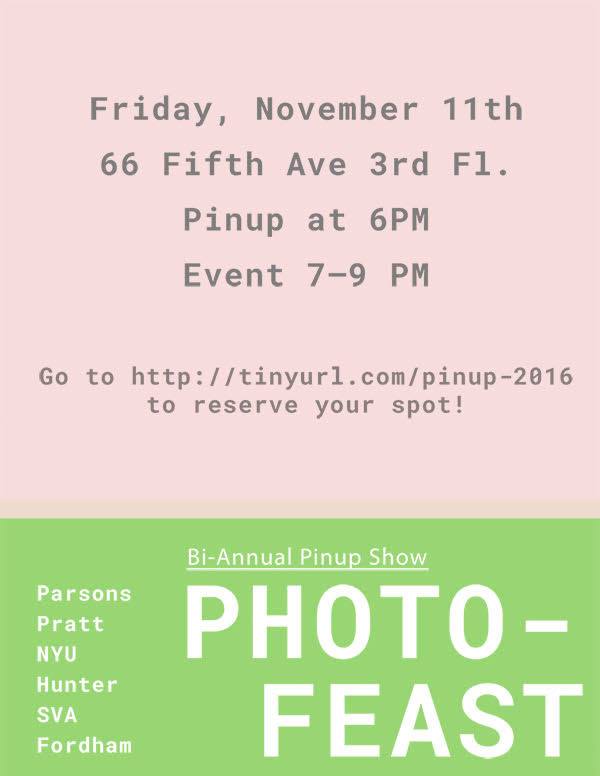
PHOTOFEAST is a collective of current BFA Photography students founded within the School of Art, Media and Technology at Parsons School of Design. Their mission is to create a platform for interdisciplinary projects, critiques,screenings, exhibitions, and publications representing new perspectives and emerging insights of young artists working in photography and beyond.
Katherine Wolkoff (New BFA Photo Faculty) Launches Book “Vita Nova” at Spaces Corners at ICP Museum
ROMAN NVMERALS is a publishing collaboration started by artists David La Spina and Michael Vahrenwald. The imprint consists of a series of simple, single-signature books, consisting of a concise body of work. ROMAN NVMERALS books are affordable and printed in the US at Meridian Printing in East Greenwich, Rhode Island on an Indigo Press. The artist-funded books are printed in batches of 20–40 in order to have no backstock or overhead, serving as a streamlined vehicle to make self-publishing affordable for artists.
ROMAN NVMERALS’s new releases include the following titles:
Vol. IX: Nine by Ted Partin
Vol. X: Little Discrepancies by Linda Gallagher and Brian Bauman
Vol. XI: El Camino Real by John Lehr
Vol. XII: Island Ponds by Orianna Riley
Vol. XIV: Woven Nº 4 by Tanya Marcuse
Vol. XV: Woven Nº 9 by Tanya Marcuse
Vol. XVII: Drafts: Letters Unsent by Ann Daly
Vol. XVIII: Vita Nova by Katherine Wolkoff
Vol. XIX: Garden Study by Marion Belanger
Vol. XX: Ranch House by Marion Belanger
Vol. XXI: Outside Edge by Marion Belanger
Vol. XXII: Oasis by Kristine Potter
Vol. XXIII: A Different Kind of Tension by Darin Mickey
Vol. LVII: Box of Fiction by Ann Daly
Jeanine Oleson, Associate Director of MFA Photo, Awarded MacDowell Fellowship

Jeanine Oleson, Associate Director of MFA Photo/Asst. Professor of Photography has been awarded a MacDowell Fellowship for Spring 2016. As a MacDowell fellow, Oleson will complete a residency at MacDowell Colony in Peterborough, New Hampshire, the oldest and most established artist colony in the nation. She will be working on an upcoming project for the Hammer Museum in Los Angeles.
Photography Lecture: Paul Hill
April 12, 12.10-2.50PM
Wollman Hall, 65 W 11th St, New York, New York
This event is open to all students and faculty.
On April 12th, British photographers Maria Falconer and Paul Hill, renowned author and educator will be presenting two projects. The first, Anon, came about when they both decided to volunteer in the refugee camps on the Greek Island of Lesvos and on the border of Greece and Macedonia. The title and their photographs reflect the anonymity and depersonalization of refugees who have had to flee their countries in the Middle East and North Africa to stay alive, literally, economically, and psychologically.
The other project, titled Empty Fantasies, looks at the remains of empty photographic sets. Fantasy and illusion have always gone hand in glove in photography since its inception in 1839. Photographers have created sets in their studios and even in today’s Photoshop world, man made sets of illusion are still in photographers’ studios, because the physical nature of these spaces are still essential in the world of glamour photography in particular.
When empty, these sets seem strange and eerie, even surreal. What slices of reality are they mimicking – and for what purpose are they used? The photographs of Falconer and Hill hint at their purpose, and combined with the quotes of the users, (photographers and models) record another reality. The tension between those words and their photographs only serves to reflect how important fantasies are to our lives and how parallel universes are more tolerable than the ones we live in.
Parsons MFA Photography Open Studios on Friday, July 24th, 6-8 PM
Aperture / Parsons LUCAS BLALOCK TALK: rescheduled for 4/21 at 6:30pm
Aperture Foundation, in collaboration with the Department of Photography at Parsons The New School for Design, is pleased to present an artist talk with Lucas Blalock. Blalock works with both analog and digital processes to explore the contradictions as well as the unique possibilities of photography. He creates images that interrupt the viewer’s aesthetic experience through digital manipulation and the juxtaposition of similar colors, shapes, textures, and patterns—disruptions which allow viewers to look beyond subject matter to the medium itself, questioning the veracity and inherent limitations of photography.
Parsons Photo Students Receive Honorable Mention in the 2015 PDN Student Photo Contest
(from the left)
Riley Kalbus (BFA Photo), honorable mention: Documentary
Dongli Huang (MFA Photo), honorable mention: Fine Art / Personal
PHOTO FACULTY JEANINE OLESON ARTIST TALK | MARCH 10, TUESDAY 6PM
SVA 133 West 21 Street, 101C
Talks are free and open to the public.
FACULTY CAPTURE ONE WORKSHOP/SALE | FRIDAY, APRIL 3, 12/3PM
Phase One Capture One Pro Workshop and Sale for Faculty
Friday, April 3rd 2015
12:00pm-3:00pm
66 Fifth Avenue, Rm. 301
Food and drinks will be served.
Capture One Pro software is the industry standard for shooting digitally in the studio and on location.
If you are interested in a professional career this workshop will provide valuable experience.
During the workshop faculty will spend two hours learning how to work with C1Pro with a certified representative from Phase One and a hands on session with Phase One digital backs and C1pro software!
Faculty will receive a copy of C1pro for free!
Student Capture One Workshop/Sale | Monday, March 9, 3/5:45PM
Phase One Capture One Pro Workshop and Sale for Students
Monday, March 9th 2015
3:00pm-5:45pm
66 Fifth Avenue, Rm. 404
Food and drinks will be served.
Capture One Pro software is the industry standard for shooting digitally in the studio and on location.
If you are interested in a professional career this workshop will provide valuable experience.
During the workshop students will spend an one hour and 15 minutes learning how to work with C1Pro with a certified representative from Phase One! We will then have an hour and a half hands on session with Phase One digital backs and C1pro software!
At this event only! Students will receive a special parsons only code to purchase capture one pro for $99.oo (cheapest you’ll ever see it), a $200 discount off the sales price.
Interview with Magali Duzant by David Chan (BFA ’16)
Interview by David Chan, BFA ’16 www.davidchanstudio.us is an artist based in Brooklyn, NY. Interests include modern art, structural film, consciousness, and the human condition.
Magali Duzant is an artist based in New York City whose work deals with themes of time, the collapse and tracking of it, the documentation and visualization of the non-physical, and the condition of searching but not knowing what for. In her project Sympathetic Magic, Duzant focuses on using photography as a tool to feed the desire for spirituality and to define something the metaphysical in using different objects, but most notably a year-long collection of aura photographs. In Live Streaming Sunset, she captures sunsets in all 4 different time zones across the United States and projects them continuously in a window in New York City. I sat down with Magali to talk about her beginnings, and how she functions and works as an artist today in New York City, and how the themes of our work relate, being that our work is in conversation and has many overlaps. In my work, I find myself also trying to define something that is extremely abstract and difficult to immediately visualize. We discuss the challenges of making this type of work in depth. I also talked to her about life after grad school, and how it is to live and work as an artist while still making money, which led to a lot of great advice for young artists out there.
David Chan: Hi Magali. I would love to start by talking a little bit about your background- where you grew up, where you did your undergrad, etc.
Magali Duzant: I’m actually from New York. I grew up in Queens and went to high school in Manhattan. I went to an arts high school- LaGuardia (Fiorello H. LaGuardia High School). The “Fame” school – dancing on taxis and shit. My mother’s family has lived in New York for ages and my dad is from the Caribbean—French is his first language and he is adorable. My dad is short and my mother is really tall, so they are like the odd couple.
DC: This explains your last name and your first name, which I’ve always wondered about!
MD: Yeah, Magali Duzant. It sounds fancy, I feel like I have a destiny to grow into it or something. I was really lucky when I went to high school because we took art courses every day. When I was applying to my undergrad, I was thinking I would either apply to art school or to a humanities program and study something like International Relations. I ended up doing both somewhat. I went to Carnegie Mellon in Pittsburgh, and I hated it when I first got there.
DC: You hated the city or the course?
MD: I hated the city, and I wasn’t sure about the course. I ended up loving it, and I did a double major in fine art and anthropology. I technically minored in photography but they wouldn’t let me make photography my main concentration because they didn’t have enough students in the program. While I was doing that, I worked as a production assistant and that’s where I really learned all of my technical skills. I don’t think I picked any of it up in classes the way I did hands on.
DC: Was that on film sets or photo sets?
MD: Both. I think a lot of my work comes out of the fact that I have self-taught myself a lot, and that I’ve done a lot of different things. I worked for a commercial photographer who did huge national ad campaigns, and I did all of his talent scouting and location scouting. I also worked for a photographer who did all interiors, which was a nice thing because we would travel to people’s mansions and shoot for Architectural Digest. I graduated straight into the recession, but I was really lucky. I had interned at a small photo gallery while I was in school, and right as I had graduated, the director was asked to fill the position of curator of photography at the Carnegie Museum and I was first asked to take over to take over installation within a week of graduating. Later, I interviewed for the job of exhibition coordinator and got it, which was amazing and scary, because I just stretched the truth the entire interview. I pretty much
just told them that I had all these skills that I didn’t. And I just sat down and had a complete panic attack, and then just started to teach myself all of these things.
DC: So you learned how to work and function in a gallery, which you never really experienced before?
MD: Yes, it was great because I learned a lot. I learned that I never want to work for a gallery ever again. I learned that working in non-profit was rewarding and incredibly frustrating. After about a year, I decided I wanted to leave Pittsburgh. I applied for a residency in California; I had gone to San Francisco and loved it. I got the residency but I had three months, and so I saved up enough money to travel, and I traveled across the country— I went down to Baja, I traveled up the west coast, took the train across Canada, I came back to New York, went up to Montreal. It was just this amazing time where I thought about work and spent money.
DC: Money well spent, though!
MD: I looked at my savings account, and I thought, “Well, it’s always good to start fresh.” I spent the next two years in California in San Francisco and I was an artist-in-residence at the Kala Art Institute. It was a really amazing space in Berkeley specifically for photographers, printmakers and video artists. I took the time to figure out what I needed to do, and at some point I realized that I was interested in maybe teaching, and it was something that I wanted to continue to do. And that’s when I decided that I wanted to do a graduate program. I knew I wanted a photo program, but I wanted one that was open and I really wanted to be back in New York, so I applied to a number of schools and was deciding between ICP-Bard, SVA, and Parsons. I chose Parsons for the structure of the program, scholarship ( I was determined to not take on debt ), and the connection to the New School. I ended up taking classes in the media studies program which was really great. I enjoyed finding my way to the notion of public art as something I was interested in. It’s exciting and a little overwhelming.
DC: Can you briefly define “public art”?
MD: When I think of it, I think of art that is not necessarily in a gallery space, that exist in communities outside of your typical art realm, so in the live streaming sunset piece, I showed it as part of the thesis show exhibition. But it was really facing the street, so it was available to the passers by; it was accessible to anyone walking by.
DC: So is it important to you that the work is accessible to more than just the art world and this specific crowd?
MD: Yes and specifically with this project, I am capturing a routine, and something that is available to anyone in one way or another and bridging distance. I grew up in Queens and because Queens is such a huge immigrant population I’m thinking about how great it would be to have it there, and how great it would be to bring different viewpoints into one place ( mimicking the make up of the borough ). There’s something calming and soothing about this imagery that I am seeking to bring back, but also to think about, why should something that is public in its essence be made private and specific to a community that isn’t necessarily that open, so to put it back into a public space.
DC: In the more recent work that you have made, like Sympathetic Magic or Live Streaming Sunset for example, are there themes in there that resonate with you? And how long have you been working with these themes?
MD: Time is a huge theme. The collapse of time, the tracking of time, is something that I have become interested in, has been present in a lot of my work over the past few years. I think isolating it as this topic of interest is what I see as this desire in contemporary culture to track, record, and analyze data. The idea of smartphones, social media, that “everyone is a photographer”, that everything is being recorded
in some way, shape, or form, and trying to utilize that in my own work. But to use that to analyze things that are a little bit beyond our normal perception. I think in almost every project, it comes down to- How do we visualize something that we can’t see? How do you visualize the sun setting all over the world? How do you visualize an aura, an energy field, or a belief system? And then they kind of shoot off, because each project brings its own “something” to it, so with the auras, I ended up becoming really interested in translation, and layers of translation through interaction or the terms that we use to describe these unknowable things.
My aunt has a summer house up in the Adirondacks and she tricked me into cleaning out her storage space. It was the worst-best vacation ever. I found this box and there were maybe 40 black and white negatives from the 20’s and a two-tiered slide organizer dating from 1949 to 1970. A stranger’s family’s photos, which was very weird. At that point, I thought a lot about different kinds of archives, the index, and how that worked. The more work I made, the more I see it as this interest in time, in memory, and kind of the vagary of that. How memory is so different from reality but supersedes reality a lot.
When I started grad school, I wanted to do something different and I ended up going back to these slides and making this installation piece. I realized that what I was more interested in was the idea of projection, and really interested in the projector as a tool and as an object as well. I went back into the space and photographed the space where the slide had been taken with a projector screen in it, and I projected the original slide on to this print of this space. That was the gateway project that then led me to thinking about time and how to collapse time and distance. I was missing California a lot, which I didn’t really think I would, and I was having this feeling of dislocation and a lot of it was this urban experience. New York was always sort of pressing in, and I didn’t think it would be a big deal because I grew up here, but I realized that my surroundings on the west coast really affected the way that I thought about things. Leaving it is when I started to become interested in spirituality and the quest for that in alternative means.
DC: So, something you can’t quite put your finger on and define.
MD: Exactly. So this idea of the condition of searching. The condition of wanting more, but not exactly knowing what that is. But also thinking about the internet as this place for it, and using the internet to collapse time and space, and follow these rabbit holes.
DC: I feel like our work has a lot of parallels, in that I’m trying to capture this human experience inspired a lot by traveling on my own. Over the summer I went to Marfa on my own, and this idea of isolation became a big thing for me, and I started reading about existential isolation, and how to understand something that you can’t quite put your finger on that exists for everyone. I’ve never thought about it before this but it’s so true and it’s so overwhelmingly intense. So trying to capture something transient that you can’t define is important to me.
MD: I love the idea of continuing trying to do it. It’s like this impossibility, but there’s something there but that makes me feel like… a part of me thinks that you’ll never do it, but the other side is saying, that doesn’t mean you shouldn’t try, and keep doing it. And there’s something really magical about those transient moments and ephemeral experiences when you are alone and when you’re trying to make sense of something a little bit bigger.
DC: One question I had was about the idea of working as an artist. You have a lot of past experiences doing commercial work, how do you balance that with your fine art interests?
MD: It’s difficult and I think the longer I do it, the more I want to do it, but the more I also appreciate how difficult it is. I was invited back to Carnegie Mellon to speak, to do studio visits with the seniors. I was freakishly positive, and I told them I think you have to treat it like a job, you have to do the work that you actually want to do. It all sounds like throwaway advice or ideas, but it does come down to the fact that
you have to make money, so you have to make work that sells or you have to do something else that supports it and it’s different for everyone. So much of it comes down to knowing yourself, knowing how you work. I personally work part time for an artist book producer, and it doesn’t pay that well, but I do some freelance work to fill in and I teach. I’m still figuring it out and I think being open to that evolution of process and interest is incredibly important. I work my part time job because I have great benefits in the sense of having access to a 9900 printer, a studio space, and I’m working on a book project and they are helping to print. I also know that I don’t work at night, so I keep Wednesdays and Thursdays as strictly studio days, and I’m in the studio all day long and working all day. Being a full-time freelancer is not something I want to do because I feel it’s like an added stress, so to do it when it comes around, but to know that I have a job that pays my bills and my rent is great. It’s a lot about peace of mind and shaping your work life to fit your personal work life in a way.
DC: You talk a lot about the people around you and people you know. Can you talk a little bit more about the kind of company you keep and the people you surround yourself with? How do you fit into a community of artists, even if not a local one? Is it important to surround yourself with people who inspire you, people who you collaborate with and you have similar interests with, or do you have people around you who do completely different things?
MD: I am one of those people who need to have people in my life who are interested in art but are not necessarily as involved in the art world. I have two really good friends in the city – one I went to middle school with, and one I went to college with. My friend Cheryl who I went to middle school with, she has a degree in comparative literature and she works in urban design and planning. My friend Michelle, who I went to college with, we went to art school together. They are both great to go to galleries with and talk about art, but they are also outside of it. So it’s a fresh perspective. It’s important for me to have people in my life who get it but are outside of it, because it’s a small world and can be a little overwhelming. But it’s also really important for me to have a community of people I can show work to, and talk to, and who are making either similar or very different work.
Sometimes it’s really easy to look at what is trendy right now, and look at it and say, “I don’t fit there.” It’s really important to have people who reassure you, and to know that you have your own little section. I’m still in touch with people from school but it’s been really important for me to branch out and to find people who are working but are working in different media. It’s really important for me to be surrounded by people who are creative and actively making or doing, and who are interested in community and how that affects their work. It’s important to stay in touch with professors- with people who are older and working, to have a different generation’s eyes and viewpoint and world view. I try to keep in touch with people that way.
DC: I think that’s great advice to have a community outside of school. I think that’s something that I’m trying to establish for myself, and just to think about things like that in the long run. Because being in school is kind of that… but to think about it in a long term way, is important.
MD: When you’re in school, you have it, in the sense that people have to show up.You’re gonna get a grade, you have to be present, you have to show up. But I think it’s super important to seek out the people who your work is in conversation with and people whose opinions you are interested in. It doesn’t have to mean that they agree with everything, but just people whose opinion you want to know. The wider you make that group, the better it is.
DC: I think the only challenge for me is that I found it a little bit difficult to find people whose work is in conversation with mine. Maybe it’s the specific community I’m in, maybe because it’s school… there’s something about the themes that I’m exploring that is maybe not thought about by people around me. That’s why I was really inspired by your work because I felt it was the first time I saw work within the realm of school that revolves around the same kinds of ideas in my head.
MD: I think the themes you explore are themes where you are really thinking about experience in a deeper way and that’s difficult sometimes to bridge a gap. It’s not a hard theme, but it’s something that is very thoughtful. It’s difficult to show, so how do you visualize it? As far as work relating… It really takes a while. When I was at Parsons, there was this Icelandic girl Kristín who I think I’m on similar parallels with. You would like her a lot. But amongst my other classmates, I found it difficult sometimes… I could talk about my work, but I would feel like there was something that wasn’t quite coming up – people would be silent and I wasn’t sure if it was indifference or dislike. I would thank them for their advice and look at how to apply it, but a lot of times I didn’t feel like we were connecting in a certain way. And sometimes you can’t connect with everyone, some work speaks to the masses, some doesn’t.
DC: Something that I feel is kind of a big challenge with my work is dealing with very abstract themes. In critiques, I’ve gotten the comment where people say it’s really hard for them to have something to grab on to in the work because the themes and the work are really abstract. But in the same vein, I never want to be too literal. Do you feel like you have the same challenges? Because you deal with pretty abstract themes yourself.
MD: Yeah, I find there’s always a fear of being too literal. For the aura project, I was really interested in the back and forth, but also in why I was interested in it. I was interested in figuring out why I was interested, and again the idea of not being able to place your finger on it, but wanting to figure it out. When I was making photographs, I didn’t know what to do because I’m interested in the thought process and all of this bizarre history that goes with it, but in the physical objects. I was working in the studio, and I found it was so easy to fall into these literal ideas. So I started making the video piece. I started mixing in all this new stuff, and it didn’t make sense. People kept telling me, “I don’t know what you are trying to say, and I don’t know what is happening.” And I finally just realized that for me, that was okay. Because that’s what it was. I think I finally got to the point where it was okay because I don’t think I’m making work where I’m hoping the audience is saying, “Oh, I see A+B=C. Great.” It is about being abstract and maybe losing yourself in something. If people have this issue where they can’t find something to grab on to, I think it’s okay. There’s so much work out there that you get immediately. I’d rather be making work that doesn’t reveal itself immediately. People want to be able to define your project immediately, and there’s a lot of one-note work out there. There’s nothing wrong with that— I have done some projects that are like that, and exist in a certain place in space.
DC: I love the idea of the inspiration coming from you trying to figure out something that you’re not sure you can figure out. And replicating that experience for the viewer.
MD: That’s exactly it. It’s saying, “I’m trying to record and show you this process. And this process is still ongoing, and doesn’t have an end.” I think, at least in school, when people say they don’t know what you are trying to do, that’s such a thing to say in a critique when you don’t know what to say and you can’t figure the work out.
DC: In a lot of ways I feel like it’s better to have a project that you can’t ever finish ever, that is ongoing, because it’s more interesting. It’s representative of this lifelong search.
MD: Some of the themes that we are both talking about – why would you be making work if you could tie it up in a nice little package and say, this is what it is?
DC: Exactly, if it had already been figured out, we wouldn’t even be talking about this, I wouldn’t even be making work about it. I like admitting that the work is a work in progress, because I feel that a lot of times in critiques, you show work and you have this confusion of stuff because you are in progress. And people critique it so hard, almost as a final. And I find myself thinking, this is not the final. And even the final is not the final. I think it’s because school is such a mix of different kinds of people and work.
MD: When I talk about my work, I describe it as “time-based” and “process oriented”. Because a lot of it comes down to exhibiting and talking about all of this stuff and these random things. It is walking through the process of making it.
DC: When people say to me that they don’t see the connection, I think about how it’s important for me to make the viewer do work. I never just want to give it to the viewer so easily.
MD: What I really picked up from grad school is that there are so many different ways to approach making work. With some people it’s about control and having an idea and executing it, and with some people it’s more open and allowing them to flow. Some people never take a picture and just use others’ work. It’s all these ways of looking at it. Some people are more literal, some are less.
DC: I was having a conversation with someone who said that their work is not about the pretty picture and aesthetic, that people might grab on to more immediately, compared to work like mine. Do you ever have those kinds of concerns about your work, where you almost have to put things in or make elements of it more commercial? Do you care about that?
MD: I think I come to a lot of my work visually. Grad school made me realize that I am interested in aesthetic beauty, and that I am attracted to a lot of things visually. I think it is natural in my work to have that. With the live stream sunset, I realized that I do want it to be approachable. By projecting it on to a window facing the street, I wanted it to be accessible. I’m interested in theory and the community of the art world, but also in accessibility. That comes in all different forms – some people use humor, or subject matter. And I think I’m using it in aesthetics. It’s just a choice.
DC: Lastly, can we just talk about the kind of research that feeds your work?
MD: I’m a huge reader – I am an only child and both of my parents worked a lot when I was little, and I was left to read, and I was a voracious reader. I find a lot of my work comes out of things I read and it spans the gamut of literature to the newspaper. When I was thinking about my aura project, I had picked up Josef Albers’ Interactions With Color, and I tried to fit it into the project but wasn’t sure how, and I was looking at how the aura cam was made, which led me to this soviet technology of the Kirlian camera. I had all these pieces and couldn’t line them up. I went to Berlin this summer and I took an issue with the New Yorker with me that i hadn’t gotten to. There was an article about translation in it. I have always been interested in this idea of words that can’t be translated into other languages. There was a tiny paragraph on this German term dasein which means “the self” or “the presence”. It’s a very german word that comes out of Heidegger. That ended up being what sparked the video and all the things that came after it. So it was just this little section of a broader article.
DC: I love the idea of untranslatable words. I thought about something during a psychedelic trip once when my brain was going a mile a minute. There are so many things I wanted to say that I just started to think, “Is the English language enough or capable?”
MD: Exactly. There’s something inspiring in the disconnect when you can’t line the two up. And if you make work around it, then it becomes about experience, and something that a language can’t say. But that sometimes visuals can. But it’s always trying to build it up so that it does.
Duzant currently has an exhibition at,
LIFT OFF / Fridman Gallery
2014 NYC Photography/Video
January 30 – February 28, 2015
Jeanine Oleson Talks About Artist Residency at The New Museum
Photography faculty member Jeanine Oleson was recently awarded school funding to pursue a residency at The New Museum. Read more about Jeanine’s exhibition and show Hear, Here!
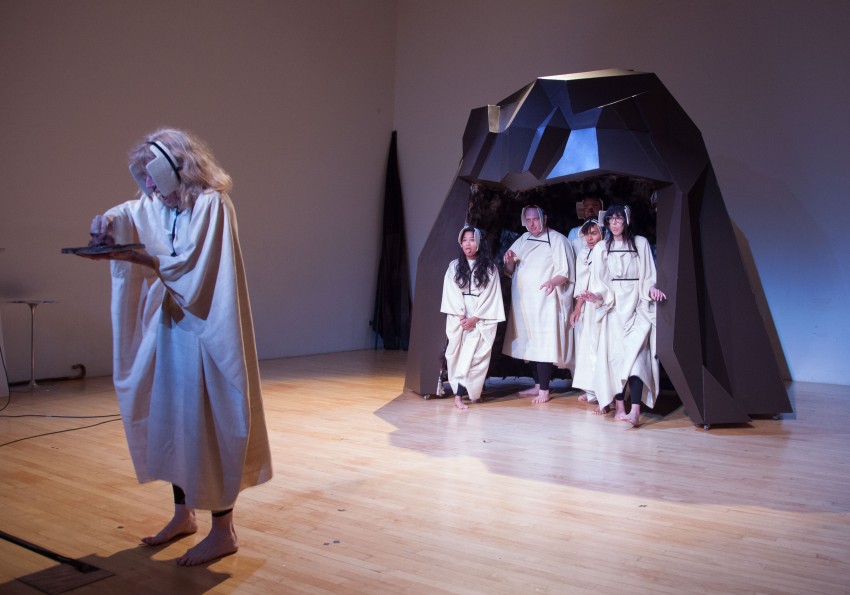
In Spring 2014 Jeanine Oleson held a four-month residency at the New Museum. Her residency was part of the New Museums’s Research and Development Season. The R&D season inhabits the roles of artist, curator, moderator and performer, among numerous others.
The Parsons school fund award she received allowed her to do the large-scale project which included an exhibition, several public programs and workshops, a publication, and an experimental opera during her residency. During the run of her show Hear, Here, Jeannie developed a video installation for the Museum’s Fifth Floor gallery that investigates conditions of spectatorship. She also created an opera in the style of the Rocky Horror Picture Show, that included movable sets for the experimental opera. The full program included a seminar on the residency’s focus on the thematic voice, invited numerous collaborators for a series of workshops and events.
The event and residency was covered by major publications like Interview Magazine, Huffington Post, New York Times and Artforum. “Challenging political and social norms through works that bear a distinctive mix of pathos and wit, Oleson engages contemporary societal topics.” – New Museum
